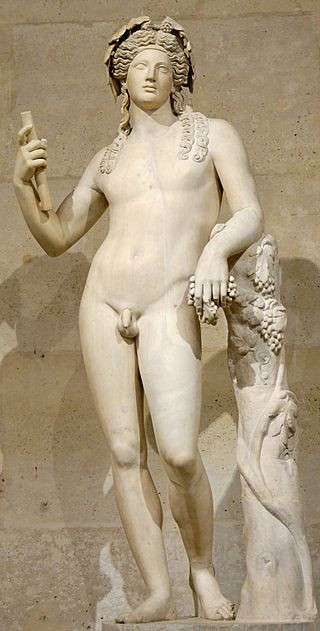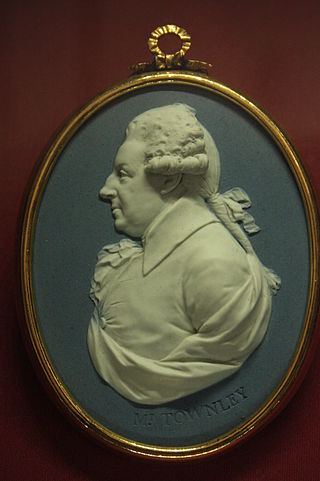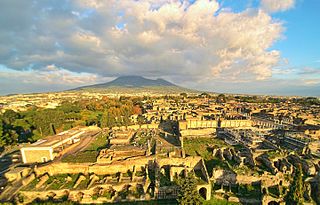
A cista is a box or basket used by the ancient Egyptians, Greeks, Etruscans and Romans for various practical and mystical purposes.

A cista is a box or basket used by the ancient Egyptians, Greeks, Etruscans and Romans for various practical and mystical purposes.


The cista or cistella was at first thought be a wicker basket used for holding fruits and vegetables and for general agricultural purposes. Although these baskets were sometimes square, they were more often cylindrical in shape. Over time, cista came to mean a smaller box or casket employed for a variety of purposes. This distinguished it from the larger area or chest; on rare occasions, it may have been used in referring to a capsa, or book-box. The cista believed to be in the private treasure of Gaius Verres may have been a money-box.
In the Roman comitia, the cista was the ballot-box into which the voters cast their tabellae. The form and material of the voters' cista, evidently of wicker or similar work, is represented in an annexed cut from a coin of the Cassia gens. In this sense, the cista has often been confused with the sitella, or urn, from which the names of the tribes or centuries were drawn out by lot.
Another class of cistae, well known from vase paintings and from a number of preserved metal specimens, are the toilet- or jewel-cases of Italian ladies, often mentioned in connection with children's trinkets, and often recognized in ancient comedies. In vase paintings, such cistae are often accompanied by other requisites for the toilet such as mirrors and scent-bottles, leaving no doubt as to the use for which they were intended. [2]
A cista mystica (secret casket) is a sacred object thought to have originated in ancient Egypt. It is usually made of reeds (papyrus) and used in the Khoiak ritual of Denderah. Inside the box was a vase, and inside the vase was the head of Osiris, a canopic box containing the viscera of the dead god. [3] Concrete evidence concerning the cista mystica of Isis is scarce. In Roman times, Plutarch gives an account of the pouring of drinking water into a golden casket inside the cista, while the congregation shouts “Osiris has been found.”
In ancient Greek mystery cults, the cistra mystica were wicker-work boxes which seem to have contained a live serpent, as represented in numerous ancient images, including coins on which a cista is shown half-open with a serpent creeping out of it. These cistra were sometimes oblong, but more frequently cylindrical, for example, as represented in a statue of Silenus sitting on a large drum-shaped cista, holding a wine-jug in his hand. Cistra mystica were also carried in procession in the Greek festivals of Demeter and Dionysus—these boxes were always kept closed in public, and contained sacred items connected with the worship of these deities. The cista mystica was also known to be sacred to Bacchus, but similar cult objects were probably also affiliated with Isis. In the Bacchic mysteries, the serpent was carried on a bed of grape leaves and was used as a stand-in for the god. The characteristic form of the serpent was an important component of the symbolism, and classical sources note it shares its shape with “the forms of men.” [4] [5]

Anubis, also known as Inpu, Inpw, Jnpw, or Anpu in Ancient Egyptian, is the god of funerary rites, protector of graves, and guide to the underworld, in ancient Egyptian religion, usually depicted as a canine or a man with a canine head.

In ancient Greek religion and mythology, Demeter is the Olympian goddess of the harvest and agriculture, presiding over crops, grains, food, and the fertility of the earth. Although Demeter is mostly known as a grain goddess, she also appeared as a goddess of health, birth, and marriage, and had connections to the Underworld. She is also called Deo. In Greek tradition, Demeter is the second child of the Titans Rhea and Cronus, and sister to Hestia, Hera, Hades, Poseidon, and Zeus. Like her other siblings except Zeus, she was swallowed by her father as an infant and rescued by Zeus.

Osiris is the god of fertility, agriculture, the afterlife, the dead, resurrection, life, and vegetation in ancient Egyptian religion. He was classically depicted as a green-skinned deity with a pharaoh's beard, partially mummy-wrapped at the legs, wearing a distinctive atef crown, and holding a symbolic crook and flail. He was one of the first to be associated with the mummy wrap. When his brother Set cut him up into pieces after killing him, Osiris' wife Isis found all the pieces and wrapped his body up, enabling him to return to life. Osiris was widely worshipped until the decline of ancient Egyptian religion during the rise of Christianity in the Roman Empire.

In ancient Greek mythology and religion, Persephone, also called Kore or Cora, is the daughter of Zeus and Demeter. She became the queen of the underworld after her abduction by her uncle Hades, the king of the underworld, who would later also take her into marriage.

Isis was a major goddess in ancient Egyptian religion whose worship spread throughout the Greco-Roman world. Isis was first mentioned in the Old Kingdom as one of the main characters of the Osiris myth, in which she resurrects her slain brother and husband, the divine king Osiris, and produces and protects his heir, Horus. She was believed to help the dead enter the afterlife as she had helped Osiris, and she was considered the divine mother of the pharaoh, who was likened to Horus. Her maternal aid was invoked in healing spells to benefit ordinary people. Originally, she played a limited role in royal rituals and temple rites, although she was more prominent in funerary practices and magical texts. She was usually portrayed in art as a human woman wearing a throne-like hieroglyph on her head. During the New Kingdom, as she took on traits that originally belonged to Hathor, the preeminent goddess of earlier times, Isis was portrayed wearing Hathor's headdress: a sun disk between the horns of a cow.

The Eleusinian Mysteries were initiations held every year for the cult of Demeter and Persephone based at the Panhellenic Sanctuary of Eleusis in ancient Greece. They are considered the "most famous of the secret religious rites of ancient Greece". Their basis was a Bronze Age agrarian cult, and there is some evidence that they were derived from the religious practices of the Mycenean period. The Mysteries represented the myth of the abduction of Persephone from her mother Demeter by the king of the underworld Hades, in a cycle with three phases: the descent (loss), the search, and the ascent, with the main theme being the ascent of Persephone and the reunion with her mother. It was a major festival during the Hellenic era, and later spread to Rome. Similar religious rites appear in the agricultural societies of the Near East and in Minoan Crete.

In ancient Greek religion and myth, Dionysus is the god of wine-making, orchards and fruit, vegetation, fertility, festivity, insanity, ritual madness, religious ecstasy, and theatre. He was also known as Bacchus by the Greeks for a frenzy he is said to induce called baccheia. As Dionysus Eleutherius, his wine, music, and ecstatic dance free his followers from self-conscious fear and care, and subvert the oppressive restraints of the powerful. His thyrsus, a fennel-stem sceptre, sometimes wound with ivy and dripping with honey, is both a beneficent wand and a weapon used to destroy those who oppose his cult and the freedoms he represents. Those who partake of his mysteries are believed to become possessed and empowered by the god himself.

Eileithyia or Ilithyia was the Greek goddess of childbirth and midwifery, and the daughter of Zeus and Hera. In the cave of Amnisos (Crete) she was related with the annual birth of the divine child, and her cult is connected with Enesidaon, who was the chthonic aspect of the god Poseidon. It is possible that her cult is related with the cult of Eleusis. In his Seventh Nemean Ode, Pindar refers to her as the maid to or seated beside the Moirai (Fates) and responsible for the creation of offspring. Her son was Sosipolis, who was worshiped at Elis.

The Gorgons, in Greek mythology, are three female monsters, Stheno, Euryale, and Medusa, sisters who were able to turn anyone who looked at them to stone. Euryale and Stheno were immortal, but Medusa was not and was slain by the hero Perseus.

Harpocrates was the god of silence, secrets and confidentiality in the Hellenistic religion developed in Ptolemaic Alexandria. Harpocrates was adapted by the Greeks from the Egyptian child god Horus, who represented the newborn Sun, rising each day at dawn. Harpocrates's name was a Hellenization of the Egyptian Har-pa-khered or Heru-pa-khered, meaning "Horus the Child". Horus is represented as a naked boy with his finger to his mouth, a realisation of the hieroglyph for "child" (𓀔). Misunderstanding this gesture, the later Greeks and Roman poets made Harpocrates the god of silence and secrecy.

In ancient Egyptian religion, Apis or Hapis, alternatively spelled Hapi-ankh, was a sacred bull or multiple sacred bulls worshiped in the Memphis region, identified as the son of Hathor, a primary deity in the pantheon of ancient Egypt. Initially, he was assigned a significant role in her worship, being sacrificed and reborn. Later, Apis also served as an intermediary between humans and other powerful deities.

Charles Townley FRS was a wealthy English country gentleman, antiquary and collector, a member of the Towneley family. He travelled on three Grand Tours to Italy, buying antique sculpture, vases, coins, manuscripts and Old Master drawings and paintings. Many of the most important pieces from his collection, especially the Townley Marbles are now in the British Museum's Department of Greek and Roman Antiquities. The marbles were overshadowed at the time, and still today, by the Elgin Marbles.

A sistrum is a musical instrument of the percussion family, a form of rattle, used most notably by the ancient Egyptians. It consists of a handle and a U-shaped metal frame, made of brass or bronze and ranging from 30–76 cm (12–30 in) in width. The frame supports sliding metal cross-bars which may hold metal rings. When shaken, the small rings or loops of thin metal on its movable crossbars produce a sound that can vary from a soft clank to a loud jangling. Its name in the ancient Egyptian language was sekhem (sḫm) or sesheshet (sššt) because of the sound it made when it rattled.The ancient Egyptian sistrum had important associations with religious and ritualistic practices concerning various musical and joyful deities.

Serapis or Sarapis is a Graeco-Egyptian god. A syncretic deity derived from the worship of the Egyptian Osiris and Apis, Serapis was extensively popularized in the third century BC on the orders of Greek Pharaoh Ptolemy I Soter, as a means to unify the Greek and Egyptian subjects of the Ptolemaic Kingdom.

The cistophorus was a coin of ancient Pergamum. It was introduced shortly before 190 B.C. at that city to provide the Attalid kingdom with a substitute for Seleucid coins and the tetradrachms of Philetairos. It also came to be used by a number of other cities that were under Attalid control. These cities included Alabanda and Kibyra. It continued to be minted and circulated by the Romans with different coin types and legends, but the same weight down to the time of Hadrian, long after the kingdom was bequeathed to Rome. It owes its name to a figure, on the obverse, of the sacred chest of Dionysus.

The concept of Hellenistic religion as the late form of Ancient Greek religion covers any of the various systems of beliefs and practices of the people who lived under the influence of ancient Greek culture during the Hellenistic period and the Roman Empire. There was much continuity in Hellenistic religion: people continued to worship the Greek gods and to practice the same rites as in Classical Greece.

The Temple of Isis is a Roman temple dedicated to the Egyptian goddess Isis. This small and almost intact temple was one of the first discoveries during the excavation of Pompeii in 1764. Its role as a Hellenized Egyptian temple in a Roman colony was fully confirmed with an inscription detailed by Francisco la Vega on July 20, 1765. Original paintings and sculptures can be seen at the Museo Archaeologico in Naples; the site itself remains on the Via del Tempio di Iside. In the aftermath of the temple's discovery many well-known artists and illustrators swarmed to the site.

The Archaeological Museum of Dion is a museum in Dion in the Pieria regional unit of Central Macedonia, Greece.

The mysteries of Isis were religious initiation rites performed in the cult of the Egyptian goddess Isis in the Greco-Roman world. They were modeled on other mystery rites, particularly the Eleusinian mysteries in honor of the Greek goddesses Demeter and Persephone, and originated sometime between the third century BCE and the second century CE. Despite their mainly Hellenistic origins, the mysteries alluded to beliefs from ancient Egyptian religion, in which the worship of Isis arose, and may have incorporated aspects of Egyptian ritual. Although Isis was worshipped across the Greco-Roman world, the mystery rites are only known to have been practiced in a few regions. In areas where they were practiced, they served to strengthen devotees' commitment to the Isis cult, although they were not required to worship her exclusively, and devotees may have risen in the cult's hierarchy by undergoing initiation. The rites may also have been thought to guarantee that the initiate's soul, with the goddess's help, would continue after death into a blissful afterlife.

Several non-native societies had an influence on Ancient Pompeian culture. Historians’ interpretation of artefacts, preserved by the Eruption of Mount Vesuvius in 79, identify that such foreign influences came largely from Greek and Hellenistic cultures of the Eastern Mediterranean, including Egypt. Greek influences were transmitted to Pompeii via the Greek colonies in Magna Graecia, which were formed in the 8th century BC. Hellenistic influences originated from Roman commerce, and later conquest of Egypt from the 2nd century BC.
Retrieved March 2, 2015, from http://www.perseus.tufts.edu/hopper/text?doc=Perseus:text:1999.04.0063:entry=cista-cn